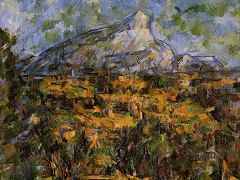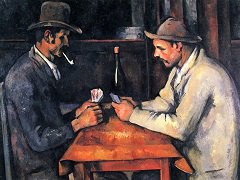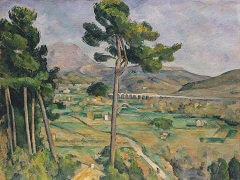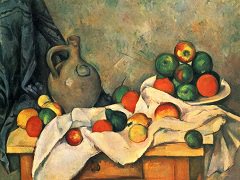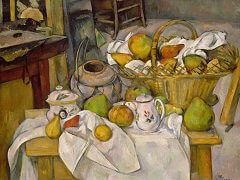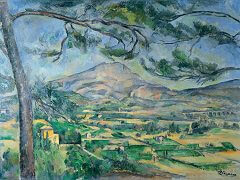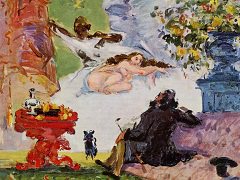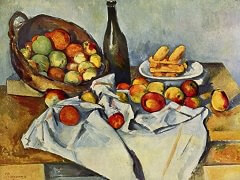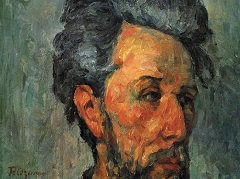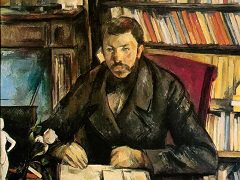Still Life with Plaster Cupid, 1895 by Paul Cezanne
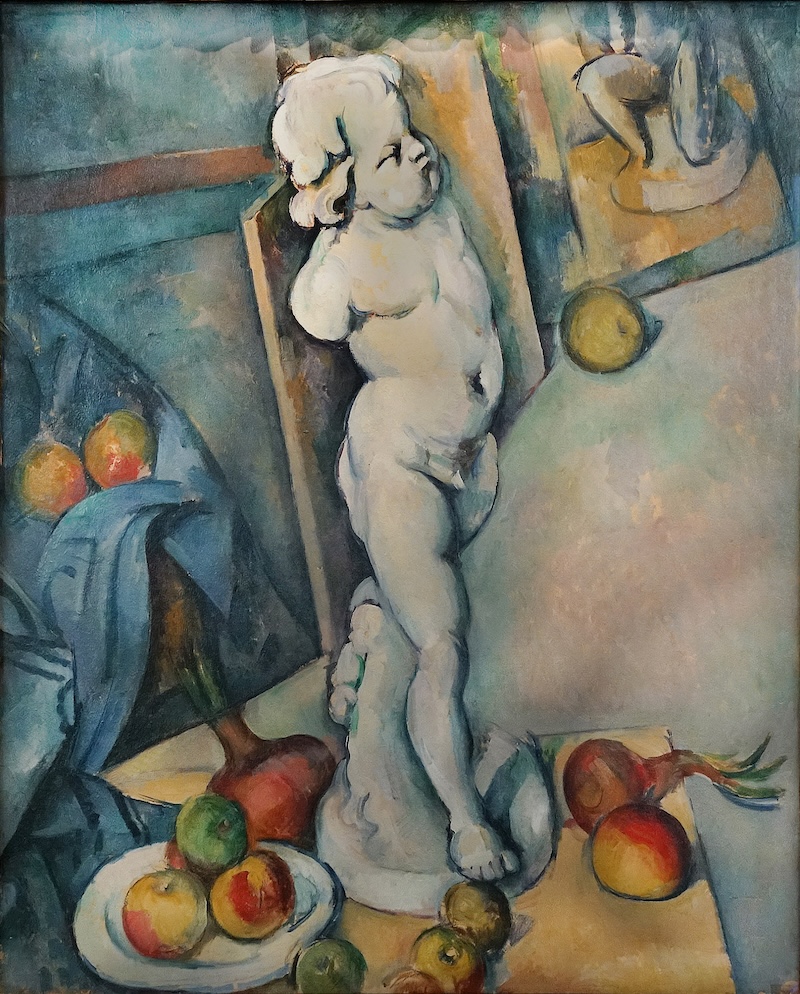
Among Cezanne's still lifes, Still Life with Plaster Cupid, 1895. is remarkable for the presence of a work of art, a cast of Puget's Cupid. Two works really, for in the background is a sketch after another statue, The Flayed Man. Both are sculptures he studied from casts - we have many drawings from them in his notebooks. His taste in sculpture is revealing. He drew mainly from works of baroque character, with rich contours and powerful c ontrasted movements; they are often themes of passion or struggle. To place such figures in a context of apples and onions is strange; what other painter would do this? The marriage of the heroic-passionate or idyllic to the commonplace-domestic corresponds to Cezanne's complexity as a man.
Here we sense these poles in the formal contrast of the apples and the statuette: the first, centered and without articulation; the Cupid, a body rich in convexities and turns. But the Cupid is white and the scattered fruit, red, yellow, and green. The two opposites are united, or at least bridged, through the onions - more articulated forms. Three apples at the Cupid's foot continue the rounded bodily line; others in the dish strive to build up to a head. In the upper right, the drawing of the crouching figure confirms the "unreality" of the Cupid, which, as a plaster cast, belongs to a third order of existence - a copy of a copy among real fruit, yet no less tangible than these. The drawing is a fourth step away from nature and is already remote and curtailed.
So much for the conception of the objects - the artistic conception is no less original. From a close viewpoint which places the foreground objects below us, we see behind them an intricate composition of tilted lines and planes, ambiguous in places yet so contrived as to belong together and re-enforce the down-stage world. A canvas set behind the Cupid is doubly tilted, and by a paradox of design parallels the main lines of the statuette. At its lower left corner, the canvas meets what seems to be the edge of the floor, but is also the edge of the beautifully formed blue drape and, by a startling artifice, coincides with the line separating the onion from its green stem. Through these devices, all frankly exposed, that whole region of the painting, which is built of straight lines, acquires an appearance of the constructed and "abstract," while other parts look more directly "seen." But these opposed attitudes do not clash, for the colors and forms of both parts harmonize and are inseparably joined; the most abstract regions have the same qualities of modulation and touch as the more natural parts. The blue drape, at once angular and curved, is also a liaison between the two.
We return to our reflections on the objects: the Cupid and the drawn statue participate in both worlds of the natural and the artificial; they are works of art, and as such represent the erotic and the suffering in a transposed form, which is colorless yet takes its place without strain in the sphere of simple, non-human things. As parts of the visible world, their root colorlessness is modified by the common light which endows them with a delicate range of warm and cool tints and the attenuations of color in space.


